Sharing is caring!
Whether you prefer it green, black, iced, loose, tea-bagged, with milk or sugar, spiced, pulled or even canned – drinking tea has become an intrinsic part of everyday life and highly treasured from every corner of the earth through various cultures and generations.
From tales of legends and the travelling of the seven seas, to meditating monks and botanist spies to tales of smuggling and revolution, the history on tea is one that is an epic journey steeped in adventure and intrigue.

CHINA
The Legend Begins
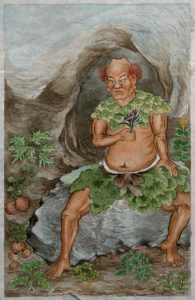
Many traditions and folklore say that tea was accidentally discovered by the mythical Chinese Emperor Shen Nung in 2737 B.C, when nearby tea leaves from the camellia sinensis plant landed in his pot of hot water in which he drank from.
The resulting pleasant infusion not only tasted good but stimulated the senses…. and the rest is history as they say!
He is thought to have taught the Chinese the arts of agriculture and medicine and is regarded as the Father of Chinese medicine. Legend has it that he had a transparent abdomen so that he was able to follow the movements and notice the effects of food and drink that he consumed.
Notoriety Of Tea In China
Tea became widespread during the Han Dynasty (206BC – 220AD) as containers for tea had been found in tombs from this era. However, it was under the Tang Dynasty (618AD – 907 AD) that it became more popular and between 760AD – 780AD, a writer called Lu Yu wrote his book devoted entirely to tea – “Cha Jing (The Classic of Tea)”, which elevated the status of tea greatly.
By the end of the third century, tea had become China’s number one beverage as it was revered for its health benefits attributed to it. As time progressed, tea ceremonies emerged and drinking tea shifted from merely medicinal functions to pleasurable social functions.
From there, tea spread to Tibet, Mongolia, Korea and Japan and by the eighth century, the Chinese were trading their tea across the globe to the Arab lands and the West, to the Turks, to the nomadic tribes of the Himalayas and along the ‘silk road’ which stretched from China to the Mediterranean.
The Chinese generally prefer their tea green, loose-leaf and plain and those from Hong Kong generally prefer their tea the English way – although evaporated milk is widely used instead of normal milk.
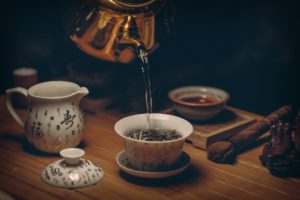
JAPAN
Meditating Monks

Around the early 9th century, tea was introduced to Japan by Japanese Buddhist monks who had travelled to China to learn and study its culture.
They realised the benefits of this intriguing beverage when they noticed the Chinese monks were able to stay alert during their meditations.
Tea drinking then became an important part of Japanese culture as the development of tea ceremonies also emerged there and drinking tea became a social event both outdoors and in private homes.
The Japanese prefer their tea green, dried then powdered to make the popular Matcha tea.
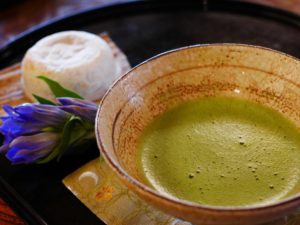
EUROPE
The Dutch Set The Trend
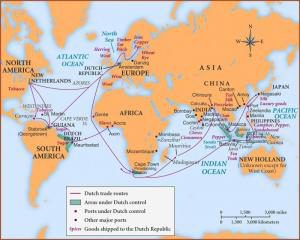
Portuguese traders and missionaries were probably the first Europeans to try tea and bring back samples, but it was the Dutch who were the first to ship it in bulk to Europe at the beginning of the 17th century.
They had developed trade relations with China and had established a trading post on the island of Java.
It was via Java, in 1606, that the first shipped distribution of tea from China to Holland was made by the Dutch East India Company (considered the first ever mega-corporation).
From the outset, tea became a fashionable trend but was only popular amongst the aristocracy and the wealthy due to its high price. This was as a result of their delicate leaves frequently deteriorating on the long sea journeys from China, forcing the profit-conscious Chinese tea producers to adopt more refined methods of manufacturing, packing and transporting.
RUSSIA

The history of tea in Russia can be traced back to around 1638, when tea was offered as gifts by the Chinese to Tsar Michael I.
By the end of the 17th century, China and Russia engaged in trade relations and after a trade agreement in 1689, tea was regularly imported in exchange for furs, via caravans of hundreds of camels travelling the year-long journey.
Thus making tea a precious commodity at the time and establishing alliances between the East and the West.
The Russians generally prefer their tea black, loose-leaf and sometimes with lemon and even jam.
BRITAIN
A Princesses Love Of Tea
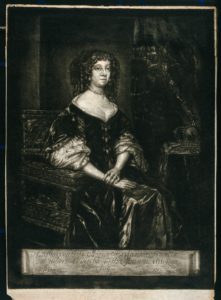
Tea was then introduced in Britain around 1660 and the importing of tea began with the marriage of King Charles II to the Portuguese princess Catherine of Braganza.
She was a big tea enthusiast and bought her love for the drink to the country and established it as a fashionable beverage amongst the nobility and wealthy.
The diarist Samuel Pepys recorded his first taste “of tee, a China drink of which I never had drunk before” in September 1666 – and less than a year later he was drinking it at home.
High Taxes & Tea Smuggling
Tea had still remained a luxury partly because of the high taxes imposed on its import. A pound of tea back then would have cost the average labourer the equivalent of nine months in wages!
Taxes on tea started off quite low but when they increased to 100%, cautious housewives kept their supplies of tea under lock and key in special boxes called ‘caddies‘ – which derives from the Chinese ‘catty‘, a standard weight of 1⅓lb (600g).
Taxation of tea lead to tea smuggling during the 18th Century which in turn led to it being more affordable to the masses. However, the poor quality control resulted in the leaves being adulterated by corrupt merchants often mixing it with sheep dung, rat droppings and even toxic copper carbonate to make the colour resemble more like tea!
By 1785, the British government removed the tax on tea thus stamping out the smuggling trade.
Tea instantly became Britain’s most important item of trade from China and by 1750, it had become the most popular drink in Britain.
Racing On The Seven Seas

With the growth of imports to the West, the development of fast sailing ships like the ‘Clipper’ were introduced.
These huge three-masted ships of American design massively decreased the time it took to sail from China to Europe, and sea captains would race each other to be the first to reach home port and win the most money. This lead to the famous clipper races of the 1860s.
Starting from the China Sea in the Pacific Ocean, then the Indian Ocean, into the southern tip of Africa into the Atlantic Ocean and finally to the English Channel.
Scores of bets were placed on the outcome of the thrilling races from London to Hong Kong and around the ports of Britain as it wasn’t just a test on sailing but the skilled and competent management of port departure.
A Very British Tradition
Tea drinking transformed into a social pastime and eventually the ‘afternoon tea‘ became part of British culture. The phrase ‘fancy a cuppa?’ has been used in times of crisis and healing in many of the infamous British soap operas. Any issues or problems are always discussed over a cuppa – building bonds and friendships in the process.
Since tea was introduced into Britain, it has been credited for its healing properties. This is reflected in a few of the famous British brands names. PG (Tips) is said to stand for ‘Pre-Gestive’ as it was drunk before eating food as a digestive aid. Typhoo means ‘doctor’ in Chinese.
The Brits generally prefer their tea black, in tea-bags with milk and often with sugar.
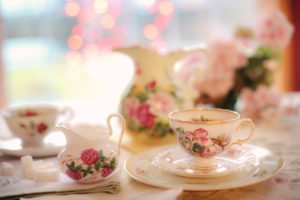
INDIA
A Gruesome Legend
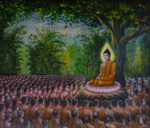
India attributes the discovery of tea to the Buddhist monk Siddhartha (a.k.a Buddha) in the sixth century AD. One gruesome legend tells the story of the prince-turned-monk who is said to have fallen asleep seven years into his nine years of mediation.
Waking up furious for having slept and thinking that this was an unforgivable weakness, he tore off his eyelids and buried them in the ground. It is said that this is where the first tea plants sprang up at the same place to enshrine of his sacrifice.
The Botanist Spy
From the mid 17th century until the 19th century, Britain imported all her tea from China.
Although the Chinese were willing to trade with Britain, they were certainly reluctant to trade information about growing tea.

So in 1848, in an attempt to break the Chinese monopoly on tea, the venerable British East India Company (the dominant trading power at the time which helped in creating a powerful and wealthy British Empire) sent a Scottish botanist ‘spy’ Robert Fortune on an undercover mission to steal tea plants from China and smuggle them back to India in order to further control the market.
Disguised as a Chinese merchant, he managed to steal more than 23,000 young plants and 17,00 seedlings with the help of eight Chinese tea-workers.
Legend holds that he and his entourage walked the perilous and hazardous journey from China to India with the precious merchandise that facilitated in India becoming one of the largest tea producers in the world and ending the reliance on Chinese grown tea.
By the 1820s, indigenous tea bushes had been discovered growing wild in Assam (northern India) by the British colonists which were already being traditionally brewed by the native Singpho tribe.
This led the British East India Company to begin mass production of tea in Assam and later into Darjeeling and subsequently in Sri Lanka (then Ceylon which was another British colony).
Despite this competition, China was still the world’s leading exporter in the mid-1880s, producing a total of 300 million lb (136 million kg) of tea in 1886 against India’s 90 million lb (41 million kg).
Indians prefer their tea black, loose-leaf, usually serving a spiced ‘masala chai‘ with milk, sugar and spices such as cardamon, cinnamon, black pepper, nutmeg, cloves or ginger.
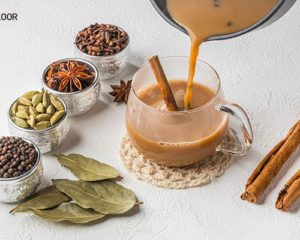
AMERICA
A Tea Revolution

Towards the beginning of the 18th century, the love of tea arrived in America and quickly became a desirable drink.
Tea played a crucial role in the American Revolution as the British Empire placed taxes on the tea supply to the colonies of North America who were under their power.
When the tax was extended to cover tea imports to the colonies, hundreds of Bostonians threw 32 cases of the first shipments of taxed tea into the harbour on the night of 16 December 1773.
This was a major factor in the revolution and the formation of the Boston Tea Party whose struggle for independence marked the beginning of the American War of Independence.
‘Iced tea’ is the preference for the Americans – cold and black with lots of sugar or sweeteners.

AFRICA
The Newest Kid On The Block
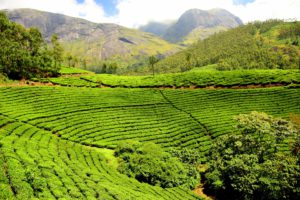
Like India, tea was bought to Africa due to British colonialism and tea plantations were established in several British colonies that were notable for their rainfall, altitude and soils.
Malawi was the first African country to be involved in tea production, establishing the first commercial plantations during the 1880s.
Kenya was the next to follow when in 1903, a European settler named Caine planted the first tea seeds from India on a two-acre farm there.
Since then, Kenya has become Africa’s largest producer of tea and is the third largest producer in the world, after China and India. [Source] Not bad for a relatively newcomer to growing tea.
North African countries such as Morocco, Tunisia and Egypt and West African countries such as Senegal, Gambia and Mauritania prefer green tea with mint and sugar. Whereas Mauritius and Kenya prefer black tea with milk and sugar which is reminiscent of the former British colonialism.
Infusing the Key Takeaways
Tea has undeniably shaped cultures, economies, and traditions across the globe. From its legendary discovery in ancient China by Emperor Shen Nung to its pivotal role in historical events like the Boston Tea Party, tea remains deeply interwoven with human history. It transitioned from a medicinal remedy to a social tradition, connecting diverse cultures and inspiring rituals such as the Japanese tea ceremony and British afternoon tea.
Today, tea is celebrated not just as a beverage but as a symbol of unity, hospitality, and cultural pride. Each region has added its unique flair, from India’s spiced masala chai to America’s sweet iced tea. Modern innovations continue to expand tea’s global appeal, whether through artisanal blends, wellness teas, or ready-to-drink bottled varieties.
No matter how it’s brewed, tea continues to be a universal companion—a timeless elixir that brings people together, offering comfort in solitude, and sparking conversations in company. So, raise your cup to this humble leaf that has traveled continents, endured centuries, and remains a beloved part of our daily rituals and grand traditions alike.
Cheers to tea—a drink steeped in history, culture, and endless stories.
How do you prefer your tea? Green, black, loose, bagged, spiced or perhaps something that isn’t mentioned here. The humble cup of tea has certainly had a colourful and intrepid past. I hope you enjoyed the read and found the history as fascinating as I did!
Let me know of any thoughts and comments you’d like to share and of course feel free to share this if you found it useful!
Peace & blessings
Teresa
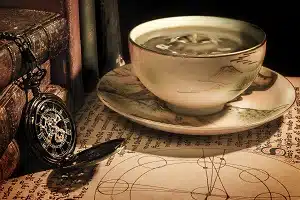


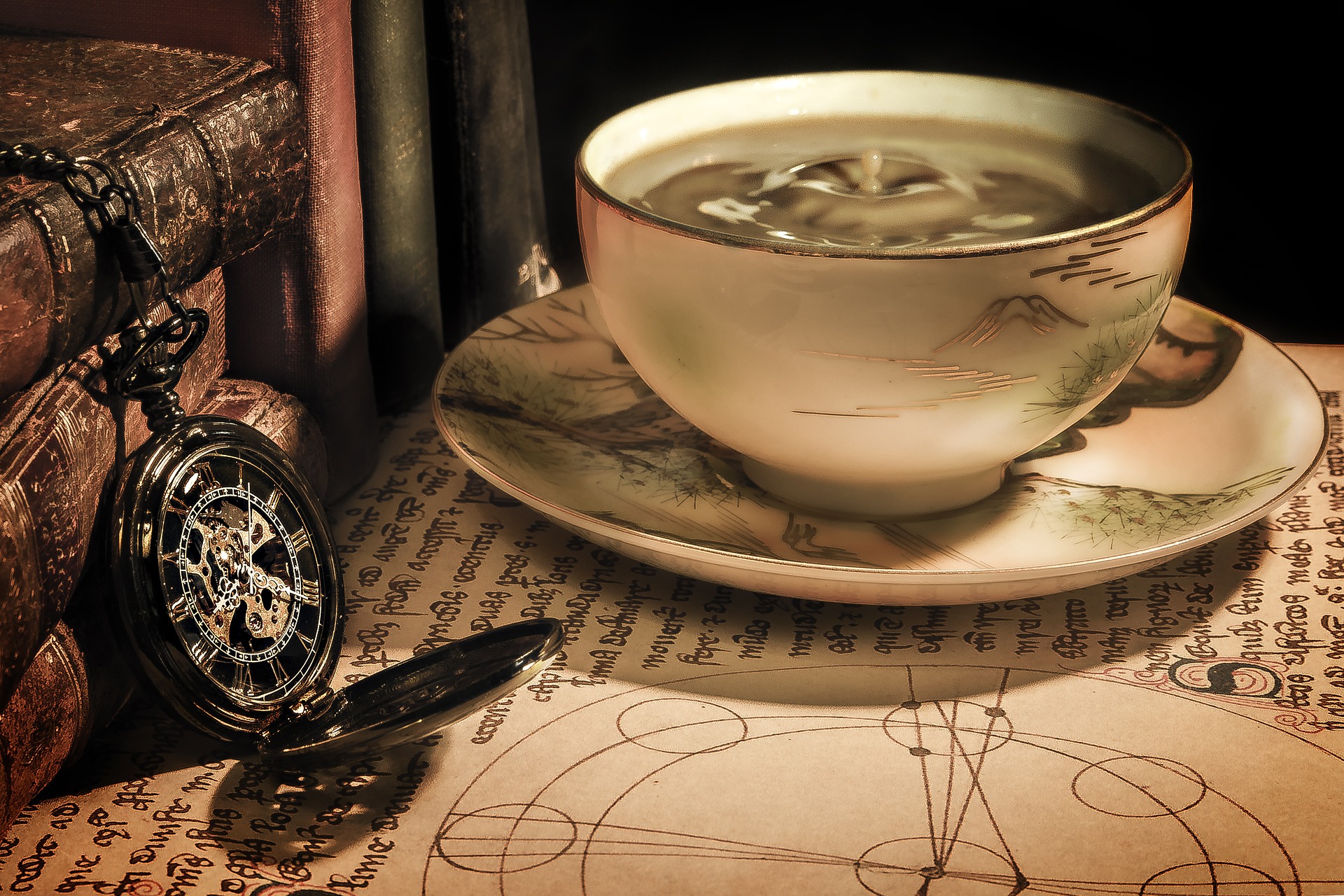



Hi, Teresa.
Oh my God! There is so much into the tea, I was not aware, even being the tea addict.
We take tea with milk, sugar and ginger or cardamom. Both ginger or cardamom if used separately gives a unique flavor to the tea. Our day starts with bed tea and finishes with the tea after dinner. Thanks for sharing comprehensive information on tea in such an attractive manner.
Warm Regards,
Gaurav Gaur
Hi there Gaurav
Sounds like tea is rich in your culture as it’s in mine and thanks for sharing that.
I’m happy to have enriched your knowledge of the second most favoured beverage in the world (Water being first in case you wondering!)
Thanks for reading and peace be with you
Teresa
I love my cups of tea but I am from the UK so I prefer mine with milk and sugar
I knew that tea originated from China but didn’t realise how much tea India produced a year and that Kenya was such a huge part of the tea industry
How do you prefer your tea and which is your favourite blend of tea?
Hey Matthew
My favourite is definitely green tea. If it’s Chinese green tea, then I prefer either Jasmine (for its floral taste) or Bi Luo Chun (aka ‘Green Snail Spring’ due to its snail-like shape after it’s been rolled) for its sweet taste and floral aroma.
If it’s Japanese then Genmaicha tops the list as I love the aroma of the toasted brown rice.
Thanks for your comments and sharing your favourite brew!
Peace be with you
Teresa
Hi!
Wow, I did not know tea went so far back! I’m quite proud of my Dutch heritage after this article. To be fair, I don’t think the Dutch drink a lot of tea nowadays, we’ve become more coffee addicts. However, since living in the UK, I’ve really grown to love tea at any time of day!
It’s so interesting to see how this drink was discovered and then spread all around the world. Look at how prevalent it is now, compared to the exclusivity of it back then.
Safe to say tea has made an impressive evolution in terms of popularity!
I prefer mine herbal and loose leaf, with a tiny bit of sugar when it’s peppermint tea, to resemble the Maroccan way of doing it.
Very interesting read!
Melanie
Hi Melanie
So glad you popped by and shared your favourite tea and a little of your background. I also like to add mint to my green teas at times to help ease digestion although I tend to hold the sugar as find it a bit too sweet for my palate!
Happy brewing and peace be with you
Teresa
This is great information and an informative history lesson on a worldwide commodity and household cupboard staple. I find it interesting that tea (and coffee) are enjoyed around the world, but that each region has it’s own history and special methods to brew and enjoy the treat.
Thanks for the very interesting read!
Hi Aly
You’re most welcome! Glad you enjoyed the read.
I just love the fact that both tea and coffee are from humble plants and were considered big commodities in the past. I’m sure the history of coffee is a rich as the history of tea and will hopefully write a post about it in the future, so watch this space!
Take care and peace be with you
Teresa
I thoroughly enjoyed your write-up on the history of tea as I have learned so much. I love history, and the way that you presented your information was terrific (especially the illustration!). I appreciated how you incorporated so many interesting facts. I had no idea that it took so long for the tea to be introduced to the west.
While reading all of this, I had the strongest urge to make a pot of loose black tea in my ceramic tea-pot (which I am drinking right now). If I had to pick my favorite, it would probably be green tea.
One question, which is the best way to make tea? Should you allow the water to boil for a while before pouring it into the teapot, or can you start pouring once it first starts to boil?
Thank you!
Hi Colleen
Thanks for your question and positive vibes!
Black tea can usually take just boiled water between 95-100°C (203-212°F) whereas green tea leaves are more delicate, so adding just boiled water to them would damage the leaves and the healing potential.
I generally will use 1 x teaspoon of green tea leaves to 300ml/½pint of water. The water ideally should be between 80°C-85°C (176 °F-185 °F).
Investing in a thermometer would be ideal here of if you really like your gadgets, then perhaps a variable temperature kettle such as the AppKettle that can help save you time and money and have better tasting tea at the right temperature!
Cover and steep for 2–3 minutes. Any longer could result in the tea tasting bitter. Using your ceramic tea pot is ideal as plastic or metal can interfere with the purity of the tea.
Covering helps the leaves to unfurl and also retain the beneficial properties.
Strain and enjoy.
Hope this helps and thanks for popping by!
Peace be with on this glorious sunny day.
Teresa
What a wonderful article. Such rich history and I love history.
By the way I like my tea green in a bag plain or with lemon, or honey.
I do have a question about tea. I have heard about a tea that blooms when you add hot water. Would you happen to know what type that is? I have often wondered about it. I have also seen it in a movie but I do not remember which one and it just looked fascinating.
Thank you for your informative article it was such a pleasure to read.
Hi LeeAnn
You’re most welcome! Lovely to meet another avid green tea drinker!
I believe it’s ‘flowering tea’ you’re referring to. Other aliases are ‘blooming tea’; ‘blossoming tea’ or ‘hand-tied tea’. They’re often made with dried green tea leaves wrapped with dried flowers such as chrysanthemum, hibiscus or jasmine and made into a ball. Once steeped in hot water, it unfurls and expands to reveal a blooming flower.
They are quite exquisite to watch! This actually reminds me to purchase another clear teapot (which I broke a while ago!) as they are the best teapots to use to watch them unfurl before your eyes!
Thanks for your positive vibes and peace be with you.
Teresa
Hello Teresa, I must say that this article is very helpful and informative. Tea is really a very common drink today but not so many people actually know s its origin. My favorite one is definitely Green tea. I learned something new today and I am very grateful that you shared this amazing info. May I ask am I allowed to share this article on Pinterest?
Hi Daniel
Thanks for sharing your favourite tea. I’m definitely with you there with the green tea! The aroma, taste and health benefits make this a popular choice. It’s a wonder that tea is the second most favoured beverage in the world, after water!
Please feel free to share this on any social platform! My aim is to hopefully enlighten people about the beauties of teas and their health benefits. I’m really happy you enjoyed my post!
Happy brewing and peace be with you.
Teresa
So it was actually Dutch that started the tea trend and not British men. Interesting that we all think of Brits as tea people now. Great article on history of tea, though! I was listening to podcast the other day, about history of coffee and both, tea and coffee, have similarities. Explorers, smugglers, prohibitions and trends.
Do you know if roasted dandelion roots are considered as tea as well?
Thanks,
Katya
Hi Katya
Dandelion is classed as a ‘herbal tea’ which is different from normal tea as they don’t come from the Camellia sinensis plant which ALL real or ‘true teas’ come from is from – black , green, oolong, white and yellow teas belong to the ‘true teas’ category.
Herbal teas are made from infusing and blending dried leaves; roots; flowers; fruits; nuts; bark roots; stems or seeds and are used to make a refreshing drink or mainly for medicinal purposes.
I’ve written a more in depth article “What Is A Herbal Tea?” here or perhaps you’d like to read “What Is In Green Tea? here so you can understand the differences between them.
Glad you enjoyed the read and I may write a history of coffee at some point, so watch this space!
Have a fantastic summer week ahead of you and peace be with you too
Teresa
I read your article on tea with great interest. I found the history fascinating. Having being born in India and growing up in England, drinking tea has been an important tradition in our family.
My parents sent me and my brother to boarding school in the hills below Darjeeling. where the hillsides are simply covered in tea plantations. We were fascinated to see giant sacks filled with tea leaves transported from one hilltop to another via a rope strung across over pulleys. The tea leaf pickers who walked between the rows of tea bushes knew exactly what leaves to pick and throw into their baskets on their backs.
My favorite tea is Orange Pekoe, commonly known as Black Tea, However, you have convinced me that I should also include green tea because of all the health benefits you mentioned. I would like to know if back tea has any heath benefits too. I drink black tea two ways. With sugar and milk. And with honey and lemon juice. Both are great. When I visit a Chinese restaurant I always order green tea.
One of my favorite locations to enjoy afternoon tea is in the Queens Room of the Ocean Liner The Queen Mary II. Smartly dressed waiters wearing white gloves serve the guests an assortment of little sandwiches and pastries together with freshly made hot black English tea. We’ve been on this ship twice and have happy tea time memories.
Talking about tea time, it is time for me to make a pot of tea for my wife and me. Tea for two as the song says!
Hi there Edwin
How amazing to hear of you previously living below the lush hills of Darjeeling. That must’ve been some experience to see the leaves being collected and wondering where they may end up! Thank you for sharing this lovely part of your history with me.
Black tea most certainly has health benefits as it comes from the same plant as green tea, oolong tea and yellow tea – the Camellia sinensis. Like green tea, black tea contains antioxidants called phenols which can help with cancer prevention, heart health and improve dental health.
However, it is green tea that is the reigning champion for antioxidant levels and the most studied for its health benefits.
For more info on green tea and its health benefits, I’ve written an article “What Is In Green Tea?” here.
Enjoy your tea for two with your wife and hope to see you around.
Peace be with you
Teresa
I had always seen that tea was a very fancy high classy drink to some cultures; to where they would even raise their pinky to drink the cup of tea. hehe 🙂 However, now that I read the history, I can completely comprehend where it all comes ffrom. Now I see why some enjoy and and why I ammore of a coffee person. lol
Hi Linda
It’s funny that you mentioned raising the pinky whilst drinking tea as this stems from the wealthy elitists who ate their tea treats with three fingers whereas the common folk would use five fingers. This belief was that the raised pinky denoted those of that were cultured and well educated. Thankfully, its not the case now!
Don’t let this deluded notion put you off drinking tea!
Take care and thanks for your comments.
Peace be with you
Teresa
What a nice compilation have you gotten in a single post!
It’s evident why it’s so easy to become a tea lover, healthy and convenient proven by humanity since BC times. Few goods production for human consumption has such a rich, clear and clean history. Some BBC scandals related to the living conditions of tea farmers and leaf collector is a good thing to happen; as every day we see more and more sustainable and human-centric initiatives being developed.
Black tea is my favorite; honey is a must to complete the experience (never sugar).
How do you compare tea and coffee? The popularity of the first one is directly related to the perception of being a healthier alternative to the second.
I’m from the Dominican Republic; there having tea on a daily basis is common as stress relievers (being the chamomile tea the preferred one).
Thanks for the enlightening post about the history behind my favorite late afternoons’ beverage!
Hi there Juan
Personally I adore drinking both coffee and tea (especially green) as both have their health benefits unique to them.
Tea is considered the healthier option as it’s full of polyphenols which are seriously rich in antioxidants and have been known to have strong anti-carcinogenic, anti-tumour, anti-ageing, anti-inflammatory and antibiotic properties.
For more info, I’ve written an article “What Is In Green Tea?” here.
Coffee too is rich in antioxidants too which have shown to offer protection against certain cancers. And the aroma from coffee is simply divine!
As with everything in life, you can have too much of a good thing – moderation is definitely key. I tend to drink coffee in the mornings and green tea towards late afternoon/early evening.
Glad you enjoyed the read. Thanks for visiting and peace be with you
Teresa
Thanks Teresa, what a fascinating article about tea!
I’ve enjoyed many of the different types of teas you mention, but I wasn’t aware of the history behind the different varieties. The differences in the preparation, ingredients, addition of other spices, and the various areas of the world where these differences were developed was truly interesting. I can tell you have done a great deal of research, and feel I can trust your articles to be truthful.
I look forward to reading more of your articles about other uses for tea, such as for medicinal purposes.
Thanks for providing these useful and interesting articles.
KyleAnn
Hi KyleAnn
I love the fact that tea unites humanity from every corner of the globe and researching it was absolutely fascinating. Pretty much every culture has developed their way of drinking it and in some cultures like Japan, tea ceremonies are held to honour the drink.
Drinking my humble cup of tea will not be the same again that’s for sure.
Really glad you found the post useful and hope to see you around.
In good health and peace be with you
Teresa
I enjoy my cup of tea, whether it’s green or black. Iced or hot. I just love the aroma and the good vibes every sip is giving me. It is fascinating to know the history of how the tea we know today came about. I certainly prefer tea over coffee. There is a rejuvinating feeling in every cup of tea if I may say. Coffee makes me weak and sleepy. Yeah, that’s what coffee can do to me.
Thanks for your comments Arwil and I certainly agree with you that every cup of tea has a rejuvenating feeling to it.
Don’t get me wrong but I love my coffee too and the aroma is just one of the best smells next to baked bread! I drink both on a daily basis although limit myself to one cup for coffee and 2-3 cups for green tea.
I’m not a huge fan of black tea as I find them quite strong and bitter – green tea is my preference yet I also like white, yellow and oolong too.
So glad you popped by and happy you enjoyed the post.
Happy brewing and peace be with you
Teresa
This was such an interesting article about the history of tea! Wow, thousands of years before Christ! That’s amazing. You asked what kind of tea we, your readers, liked? I am a green tea lover. The health benefits, the antioxidants, the anti-cancer properties, so many good things come from regular consumption of green tea. I drink it hot, or iced, and it’s delicious. I love it. Great article!
Hi Babsie
I’m with you there! I’m a massive fan of green tea too and prefer it hot especially after a meal.
After water, tea is the most favoured beverage in the world and the most compelling and significant effects on our health have been the studies into the consumption of green tea.
For more info, I’ve written an article “What Is In Green Tea?” here.
Have a great week ahead and peace be with you.
Teresa